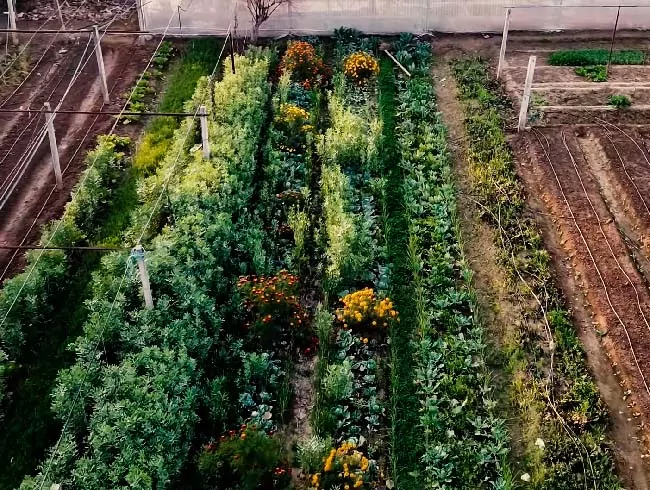
“Allow nature to do what it does the best,” Organic farming is based on this straightforward principle.
As a response to the extent of environmental damage caused by the use of chemical pesticides, insecticides, and synthetic fertilizers in conventional farming — it resulted in health-related diseases like cancer, pollution, degradation of soil and water, and its overall impacts on living beings.
Therefore, organic farming is considered the most ecologically beneficial and viable.
Organic farming is a natural technique involving cultivating crops and rearing animals, excluding synthetic substances like fertilizers, pesticides, antibiotics, and growth hormones, including genetically modified organisms.
Benefits Of Organic Farming
Beyond money and ethics — organic farming practices have numerous holistic environmental and health benefits.
Compared with conventional agriculture, organic farming extensively relies upon animal manure, crop rotation, crop residues, and recycling off-farm organic waste.
This farming method reduces soil erosion, decreases nitrate leaching into ground and surface water, and builds healthy soil and an organic environment, thereby minimizing pollution and wastage.
Due to the high content of vitamins and minerals, the nutritional value of organic food is high, tasty, and poison-free, which are the factors that appeal to consumers.
However, these benefits are counterbalanced by the factors like higher production costs for consumers due to its generally lower yields, increasing demands, and a large number of labor or human resources required to maintain the works associated with it to increase organic crop productivity production cost.
Requirements For Organic Farming
If you’re planning to be an organic producer, the land must meet the basic requirements within the scope of national policy.
The basis for crop production in gardening, farming, and forestry is considering the structure and fertility of the soil and surrounding ecosystem and providing a diversity of species while minimizing nutrient losses.
Beyond the basics, producers of organic crops must manage their soil and crop nutrients, and all seeds and plant material should be certified organic.
It would be best if you worked on a crop rotation plan, and an adequately integrated pest management system is essential on the organic farm.
Sufficient quantities of biodegradable material of microbial, plant, or animal origin should be returned to the soil to increase or maintain its fertility and biological activity.
Organic Fertilizers
Organic fertilizers are fertilizers produced from the primary raw materials that are natural organic substances (excluding synthetic organic substances), processed through physical or biological methods.
Organic fertilizer production technology offers the organic fertilizer production line commonly used to process different fermented organic substances into biological organic fertilizer.
Organic fertilizer contains various organic acids, peptides, and rich nutrients, including nitrogen, phosphorus, and potassium. They provide comprehensive crop nutrition, increasing and updating soil organic matter, promoting microbial breeding, and improving soil physical and chemical properties and biological activity.
Microbial inoculants, mineral elements, and natural supplements are added to improve the quality and efficiency of fertilizers.
Organic fertilizers are produced domestically in two ways: traditional composting and industrial production.
Traditional Composting:
Traditional composting methods are mainly used on a farm scale based on waste materials or crop residues collected from livestock and household farming.
Industrial Production:
The industrial production of organic fertilizer is the production of compost on an industrial scale using rapid composting technology. Rapid composting methods offer possibilities for reducing the processing period by up to some weeks.
Greenhouse
Greenhouses have applications in the agriculture industry.
Growing media, fertilizers, and pest management techniques may differ from conventional greenhouse production when using organic methods for greenhouse crops. More commercially available fertilizers for organic products make organic production a viable option.
Growing environmental awareness and concerns over the health impacts of pesticide residues and consumption of genetically modified crops fosters the growth of the global organic farming market.
Organic food sales increased steadily from the late 20th century, yet yields of organic crops are about 25 percent lower overall than conventionally grown crops.
Meeting the preferences of the increasing world population, the challenge for future organic agriculture will be to maintain its environmental benefits, increase yields, reducing its prices.
Practices Of Organic Farming
‘What makes these things organic is how close to their natural state they stay.’
Organic farming methods emphasize the use of renewable resources and the conservation of soil and water.

Good Soil
It all starts with good soil. The right soil mix leads to healthier crops and animals, reduces their susceptibility to disease, and increases the farm’s overall productivity.
Compost
Compost is an organic material made of decaying and decayed organic wastes and is spread on garden beds and organically farmed fields. It includes wood chips, grass clippings and leaves, food wastes, and manures from poultry, cow, and horse. It can help beneficial bacteria and fungi grow, creating nutrient-rich, moist soil while eliminating or reducing the need for chemical fertilizers.
Cover Crops And Green Manure
The addition of green manures and cover crops also improve soil quality. Plants are grown specifically to benefit the soil and the main crops on the farm. Depending on the needs of their fields, farmers choose from various cover crop plants.
Cover crops are generally used to protect the soil’s surface from water and wind erosion, help maintain soil structure, and help support the level of organic matter in the ground, all of which keep the soil healthy.
Cover crops take up space — of conventional pesticides — to keep away from weeds and pests and attract beneficial pests, such as ladybugs.
Green manure is a cover crop plowed into the soil and grown to add nutrients to the ground, increasing organic matter.
Crop Rotations
Crop rotations are also part of the strategy as organic farmers grow different types of crops in the farmland to help sustain soil fertility and reduce soil erosion.
Especially in mono-cropping, where soil can become depleted of nutrients as the same crop is grown on the same land year after year, the ground cannot be used for only one set of nutrients.
If the soil has to stay healthy, there needs variety and crop rotations to provide it.




